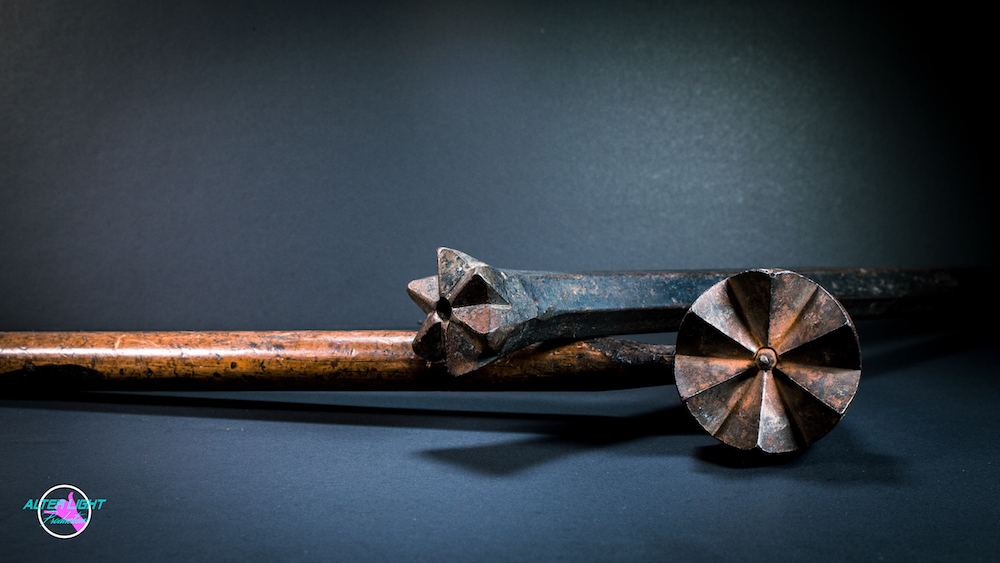Dye and Drill Set

Date unknown
Source: Alter Light Production, Beachville District Museum collection – 1982.08.01 & 1982.08.02
Steam drills were more efficient than hand drills, as they broke through rock, though they quickly expended drill steel. This made a lot of work for the quarry’s blacksmiths, who were in charge of “repointing” or sharpening the long drills and bits. This six-point star drill has a hole down the centre where air was blown through to clear away the rock dust produced by the drill. So, when the drill had to be re-pointed, the blacksmith needed a dye (or “swage”) to reform the edges of the drill and the hole. Notice that the dye, with the wooden handle, has a spike at the centre. It would have fit snugly to the end of the drill as it was reformed.

